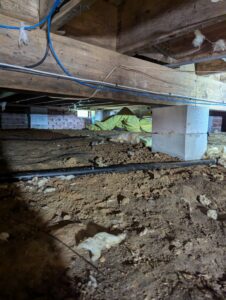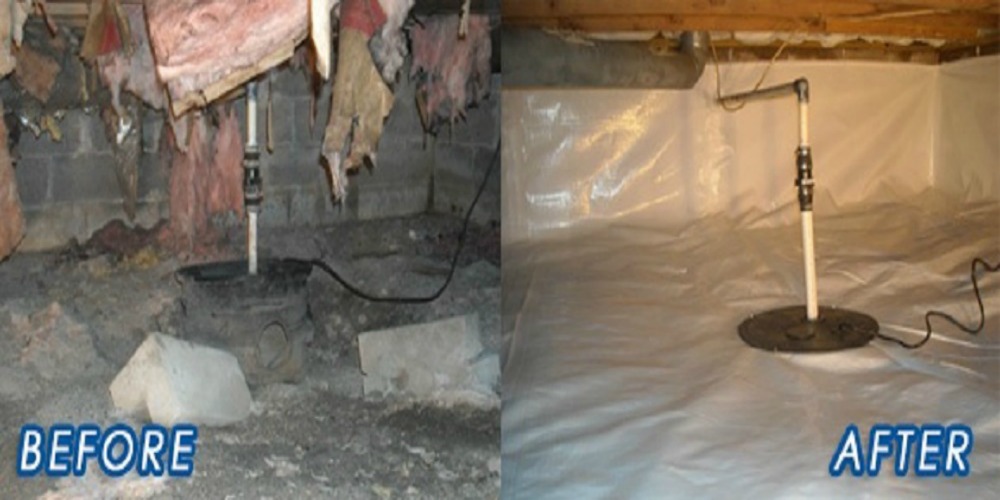Dangers of Mold in Your Crawl Space and How to Take Action
Your crawlspace might seem like an out-of-sight, out-of-mind part of your home, but what lurks beneath your floorboards can pose a significant risk to your health and property. Mold, a sneaky and potentially hazardous organism, thrives in damp, dark environments, making crawlspaces prime real estate for these unwelcome guests. The remedy is simple: Crawl Space Mold Remediation.
The Health Risks of Crawl Space Mold:
Inhaling mold spores can trigger a variety of health problems, especially for those with allergies, asthma, or weakened immune systems. Symptoms can range from mild irritation (think itchy eyes, runny nose, and respiratory discomfort) to more serious issues like bronchitis and even chronic sinusitis. The Environmental Protection Agency (EPA) [https://www.epa.gov/mold] warns that some molds produce mycotoxins, toxic substances that can lead to neurological problems and even suppress the immune system.

Identifying a Mold Problem in Your Crawl Space:
Early detection is key! Here’s what to watch out for:
- Musty Odors: A strong, earthy smell emanating from your crawlspace can be a red flag for mold growth.
- Visible Mold: Take a peek under your crawlspace (if accessible) or look for signs on basement walls or floor joists. Mold can appear in various colors, including black, green, brown, or white.
- Water Damage: Since mold thrives in damp environments, any signs of water damage like leaks, cracks, or excessive condensation point towards a potential mold issue.
Warped or Discolored Wood: Mold can weaken and damage wood structures in your crawlspace, leading to warping and discoloration of floor joists or support beams. Do your floors sag? You may have mold in your crawlspace.
DIY Mold Remediation or Calling in the Professionals?
If you suspect a small mold patch (under 10 square feet) on a non-porous surface like concrete, you might be able to tackle it yourself. A high quality fungicide will usually accomplish the task at hand. However, remember safety first! Wear protective gear like gloves, a respirator, and eye goggles when handling mold.
Here’s when to call in a professional mold remediation company like Vance Insulation: (check out the steps we take by clicking here!
- Extensive Mold Growth: If the mold covers more than 10 square feet, it’s best to leave it to the pros.
- Mold on Porous Materials: Mold loves to burrow into porous materials like wood, making DIY remediation difficult and potentially ineffective.
- Mold Type Unknown: There are many different types of mold, and some can be more toxic than others. The remediation process is the same for all mold types.
- Health Concerns: If you have any health concerns related to mold exposure, such as respiratory problems or allergies, err on the side of caution and seek professional help.
Crawl Space Mold Remediation and Prevention:
Certified mold remediation companies like Vance Insulation can safely remove the mold using specialized techniques and equipment. We will also identify the source of moisture that allowed the mold to grow in the first place. This could be anything from leaky pipes to poor ventilation. Addressing the root cause is crucial to prevent future mold problems.
The Occupational Safety and Health Administration (OSHA) [https://www.osha.gov/] offers guidance on selecting a qualified mold remediation professional. Look for companies with a strong reputation and with longevity in the business.
Vance Insulation has been in business since 1960 and has served over 15000 homes in the Richmond, Virginia area. We will work to eradicate the mold at its source and prevent its return. Check us out at www.VanceInsulation.com.
Preventing Mold Growth in Your Crawl Space:
Here are some tips to keep your crawlspace mold-free:
- Moisture Control: This is the number one defense against mold. Ensure proper ventilation in your crawlspace by installing vents or a dehumidifier (We’ve got those too!). Regularly inspect your crawlspace for leaks and address them promptly.
- Maintain a Dry Perimeter: Make sure the ground around your crawlspace slopes away from the foundation to prevent water pooling. Consider installing gutters or a French drain system for additional drainage. (Need drainage underneath the house? We can do that too!)
- Insulate Exposed Pipes: Condensation on cold pipes can contribute to moisture problems. Insulate exposed pipes in your crawlspace to prevent this.
- Encapsulate the Crawlspace: In areas with high humidity like Virginia, encapsulating the crawlspace with a vapor barrier can be a good long-term solution. Vance Insulation offers a comprehensive and thorough option for this too.
By taking action at the first sign of trouble and implementing preventative measures, you can keep your crawlspace mold-free and ensure a healthy and secure home environment. Remember, a proactive approach is key to winning the battle against this silent threat underfoot.

Want a free estimate? Call us today! 804-862-4493!
